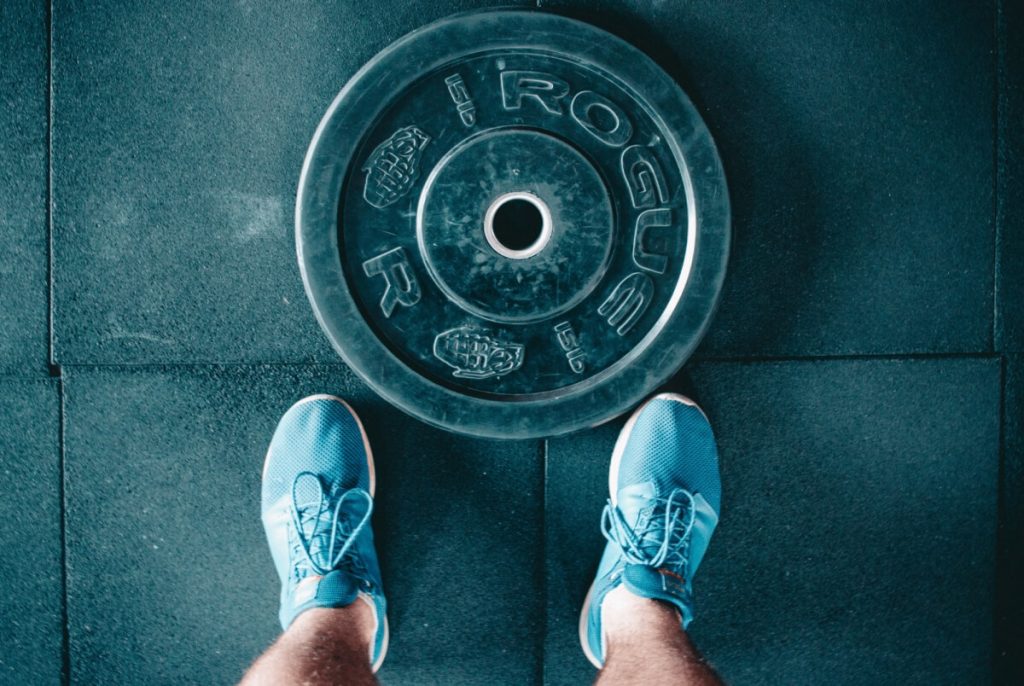
Psychology of Weight Loss Motivation


Psychology of Weight Loss Motivation
Neurochemistry is one of the greatest drivers of human behavior. When your neurochemistry is stacked against you, success can seem impossible. When your neurochemistry is optimized, you will feel indomitable.
Thanks to modern understanding of how these neurochemicals affect our brain and our actions we can hack them in our favor. We’ve seen this countless times with our clients and even ourselves. Successful people can move forward despite the lack of motivation, and often it’s about changing perspectives. It all starts in your mind.
You might need motivation to get started, and then you need motivation to keep your weight off. But the people who keep their progress for life do so by changing their identities, which leads to changes in habits and decision making.
Here’s how to motivate yourself to lose weight, even if you’re obese or don’t feel like it.

Weight loss motivation #1: Create Your Own Dopamine-Driven Reward Loops
Dopamine is your reward neurotransmitter. It makes you want more of things that help you survive, like food, sex, sunshine, or meeting someone you love.
But dopamine can also drive addiction, including food addiction and emotional eating. These can make it very difficult to lose weight or stick to a nutrition program.
What if I told you that you’re in control of your dopamine? You have far more power to hack than you ever thought possible.
Knowing how to hack your dopamine system is one of the most powerful things ever. If you know how to multiply the dopamine levels in your mind, your ability to succeed will multiply with it.
How do we do this? You create your own layer cake of dopamine loops. The dopamine loop starts with MAKING THE DECISION of “What’s important to me?” YOU CREATE YOUR OWN RULES. YOU DECIDE WHAT’S A WIN. This may sound TOO simple to be some sort of a game-changing thing, however I assure THIS IS THE EDGE OF ALL EDGES when it comes to playing mental games with yourself.
As soon as you decide that something is important and you take action towards getting it, you get a dopamine boost. As you move towards achieving and anticipate its outcome, your dopamine levels get elevated. If you have a strong dopamine response, you’re going to continue to take that action over and over again. Why? Because humans want to feel better. Dopamine feels good.
The challenge is that most people don’t consciously commit to new decisions and directions. Their core values are mostly unconscious. Their dopamine loops haven’t been consciously crafted.
This technique is the mental process that the world’s toughest people have used to create their unbreakable spirit.
The Secret To SuperHuman Toughness
Why are some people able to do what seems to be superhuman feats of mental toughness and endurance? The answer is the dance between dopamine and noradrenaline.
Noradrenaline is the “effort” molecule that gets us started, but it also makes us quit when it gets elevated too much. When noradrenaline gets too high, we feel overwhelmed and it breaks us. However there is a HACK that counters the noradrenaline.
Neuroscientist and Stanford researcher, Dr. Andrew Huberman shines light on this topic: “When noradrenaline gets too high animals quit. When it gets too high in animals in lab experiments, this is when they stop. The molecule that attenuates noradrenaline is dopamine.”
What this means is: if we can increase our dopamine levels while facing tough situations (which raises our noradrenaline levels), then we can give ourselves the ability to keep going. Huberman is saying that IF we have enough dopamine we can keep going and going and going.
THIS IS ONE OF THE BIGGEST REVELATIONS EVER WHEN IT COMES TO PUSHING OURSELVES TO SUPERHUMAN LEVELS.
This gives us an understanding of people like David Goggins. David Goggins has:
- Ran more than 200 miles nonstop in 39 hours and placed third in the toughest foot race on the planet: the Badwater 135, which takes place in Death Valley during the summer.
- Set a Guinness World Record with those 4,030 pull-ups
- Lost 50 kg (110 lbs)
People with superhuman mental toughness like David Goggins create incredibly strong dopamine loops that make them enjoy extreme things. He’s determined and decided that LIVING THIS WAY IS WINNING.
Because of this, he wakes up at 3 AM to go run in freezing cold weather for three hours and films it on Youtube. He feels awesome, he loves it, and this “edge” is how he does it.
Weight loss motivation #2: Layer Your Dopamine Loops

The key is to layer multiple dopamine loops: micro ones, daily ones, weekly ones, multi-month ones, multi-year ones and lifetime ones. It’s a major mistake only to have one main dopamine like your final form weight. You’re robbing yourself of sooo much dopamine when you do this.
Multi-Year Wins: The Ultimate Vision
Ask yourself: “What’s the ultimate dream?” What do you want to look like? Don’t let past mistakes and challenges stop you. You’ve got the tools now. This book has the tools and you’re getting them by reading and integrating them into your life.
By creating a huge long-term vision, you give yourself a very strong, solid foundation of dopamine to ride on for years or even decades. This is what every kid who dreamt of being a professional athlete did. They saw the vision, and made the decision to go for it. The drive from the dopamine allowed them to overcome all of the challenges. This is how Wade became a 3-time National natural bodybuilding champion.
Multi-Month Wins: Chop The Journey Into Smaller Goals
As we mentioned earlier, your brain rewards you with a burst of dopamine when you achieve your goals. This is why 12-week programs work well psychologically. As neuroscientist Andrew Huberman says, “Your brain is always trying to assess the duration, path, and outcome to every decision.”
- DURATION: How long is this journey going to take?
- PATH: What does it take to get there?
- OUTCOME? What am I going to get from it?
If the path feels too long, many people break before the journey begins because the time perception is too much.
A powerful technique is to break the bigger vision into medium goals. When Matt went for his “Final Form” his goals were:
- Goal 1: 242 lbs to 220 lbs.
- Goal 2: 220 lbs to 210lbs.
- Goal 3: 210 lbs to 199 lbs
- Goal 4: Reverse diet back to maintenance without going over 205 lbs.
- Goal 5: Staying within 205-212 for more than 2 years.
By doing this, it did multiple things. First, he felt like it was a massive win when he hit 220 lbs and 208. Second, his brain already had the next goal cued up in his mind.
Weekly Reward Cycles
With fat loss, muscle gain, and athletic performance, weekly focus is a key time window. Many people make the mistake of using a daily window for calories, which is not a great approach because you can fast and feast a bit. There’s advantages when it comes to recomping that we will discuss in chapter X. In the end, what really matters is the weekly energy balance. If you achieved your weekly deficit: YOU’RE WINNING.
For example, when Wade works on dropping 30 lbs for a bodybuilding show, he breaks down the goal on a weekly cycle. Over the 15 weeks, that’s 2 lbs/week. The first week he’s got to make sure he’s two pounds down. So if he’s down by 2 lbs at the end of the week, he gets the reward and he’s got the next week cued up in his mind.
Daily Wins: Acknowledge ALL The Micro Wins
Looking at ALL THE WINS of your day is a powerful process. Maybe this is the most important dopamine loop creator of them all.
The goal is to live in a state of perpetual gratitude. You want to feel like you’re ALWAYS WINNING, even when there are difficult challenges.
One of the best ways is to do a daily gratitude list. At the end of day, take a couple of minutes and count ALL your blessings. Some people use a journal and love to write it out by hand. Some people create digital Gratitude Groups where they share their gratitude lists with a small group of friends. Not only do you feel that you’re winning with your own list, but you feel inspired by others’ gratitude list.
How can you apply this in your journey?
Here’s a small list:
- Every workout is a win.
- Every good meal is a win.
- Every pound lost is a win.
- Not gaining weight on vacation is a win.
- Every successful week is a win.
- Learning things that help support your journey is a win.
- Finding a training partner is a win.
- Dropping a dress size is a win.
- Looking better in your clothes is a win.
- Completing a training program is a win.
- Finishing a diet phase is a win.
- Starting a new phase is a win.
- Starting a new training program is a win.
- Trying a new form of exercise is a win.
- Helping others get started with their journey is a win.
- Staying at the same weight but losing body fat and gaining muscle is a win.
- Hiring a coach is a win.
- Learning from failure is a HUGE win.
- Creating a new healthy habit is a win.
- Stopping an old bad habit is a win.
- 5 more reps is a win.
- A great night’s sleep is a major win
- Every time you use a biohacking device it’s a win…
- Every quarter inch loss on the measuring tape is a win.
- Create your own wins: “Everything time I, (FILL IN THE GAP)…”
Tom Platz: The King Intensity And Micro Dopamine Loops

When it comes to extremely difficult physical effort, micro dopamine loops are the solution. Tom Platz, a bodybuilder who built the most freakish legs of all time in his era, achieved feats of training intensity that perhaps no other human has ever gone to. He is considered by his peers to be the king of intensity when it comes to weight lifting. No one has been able to match many of his feats
Here’s some of he crazy things Tom did:
- He squatted his bodyweight (225 lbs) for 10 mins straight. He ended up doing over 100 reps and had to be driven to the hospital for oxygen deprivation. He said his legs grew for 3 weeks from that one single rep.
- He was famous for pushing one single set to the deepest levels of muscular failure: from concentric failure, to eccentric failure, to partial rep failure, to static rep failure.
He would hack his mind by just focusing on “5 more reps”. Not only that, he built the dopamine loop in his mind by DECIDING that “doing 5 more reps is a win.” By creating continual mini-dopamine loops WITHIN the set, it allowed him to push his body to superhuman levels of effort.
This mind hack is available to everyone. You just have to choose. The first key choice is that:
Your health is your most valuable asset. If you lose that, what do you have left?
REMEMBER: YOU’RE IN CONTROL OF YOUR DOPAMINE. You choose “what’s a win.” Those simple decisions will create your dopamine loops. The point is: CELEBRATE EVERY VICTORY. Every win, no matter how small, MATTERS. Be grateful for EVERY little thing and every little win.
These wins help lower your noradrenaline. The dopamine propels you into action. This is one of the most powerful psychological techniques ever.
Weight loss motivation #3: ALWAYS, ALWAYS Have “The Next Goal”
There is a very important aspect of dopamine that if unmanaged, sets people up for failure and depression. Dopamine goes down massively once a goal is achieved.
Dopamine helps drive us to do things and achieve goals. As Dr. Andrew Huberman eloquently states, “dopamine is the molecule of anticipation.” This is why the “moment of achievement” can be so disappointing sometimes. People have this massive goal in their minds and finally hit it. The anticipation is gone.
There is a key process that Matt always used with all his clients: create THE NEXT GOAL BEFORE THIS ONE ENDS.
Wade did the same thing with his own journey from a farm boy to the Mr. Universe: he created an epic vision and chopped it into dozens and dozens of goals for two decades. This was fueled by his dopamine.
The journey to the goal is what fuels the dopamine. Achieving it drops the dopamine. This is how our brains are hardwired. The solution is simple: CREATE ENDLESS SETS OF GOALS.
Weight loss motivation #4: Take Action Even If You Don’t Feel Like It
This edge is one of the biggest “make or breaks” when it comes to success. Do you program your brain to “JUST DO IT!” when you don’t feel like exercising or eating the next right meal? Or do you program it to “JUST FRIG IT!”
You must take the RIGHT action, ESPECIALLY when you don’t feel like it. Why? Because it’s a critical brain-programming moment. This is the moment where you either break the cycle of failure or strengthen it. Failure BEGINS with just missing once. It’s like they say in recovery, “Just don’t have the first drink.” The first drink leads to the second to the third and to another and next thing you know you’re GONE for a decade.
When Matt was 12 years old he received his first weight set for Christmas. With it came a booklet from Joe Weider and there was a key lesson in it: NEVER MISS A WORKOUT.
Because that’s how you reprogram your brain to do the right action no matter what. Matt recalls a day that a girlfriend he loved broke his heart while he was in University. The last thing he wanted to do was go train. But he knew that it was a key moment. As the legendary Tom Platz says, “Any problems you have in life, the iron always saves you.” Matt trained and felt better and more importantly, he knew he had rewired his mind to train even when it didn’t feel like it.
Hack your mind: make the decision right now that when you “take action even when you don’t feel like it,” it’s how you hardwire your brain to win, no matter what.
Weight loss motivation #5: Value Long-Term Wins Over Short-Term Gratifications
Life is a long-game so play it accordingly.
Throughout our careers, we’ve done and seen our fair share of 12-16-week transformations. Marketers know that it’s much easier to sell than multi-year-long programs because people gravitate towards instant gratification. The problem is, the majority of people who go through the program do achieve the results at the end, end up back to where they started.
These short-term shred programs set you up for massive rebounds because of your starvation survival effects. The diets and workouts are so aggressive that they prime your body to fight back with vengeance as soon as you’re done with your bodybuilding show, photoshoot, or wedding that you lost weight for. Also, because the programs don’t fit with your lifestyle, the chance of you maintaining them for life is very slim.
Both of us have made these mistakes – Matt regained 40 lbs after dieting for his wedding. Wade went from Mr. Universe to Mr. Marshmallow and gained 42 lbs in 16 weeks after aggressively preparing for the competition. Speaking of marshmallows…
One of the most revealing long-term experiments concerning this edge is known as “The Marshmallow Experiment.” They took groups of young kids and made them the following challenge: “We’re going to give you one marshmallow and we’re going to leave the room. We will come back later and if you didn’t eat it we’ll give you a second one. If you eat it, you don’t get any more.”
Then they followed the success paths of:
Group A: the kids who ate the marshmallow.
Group B: the kids who didn’t eat the first one.
Group B was FAR more successful in almost all aspects of life. Why? Because they valued the long term wins over instant gratification. This mindset carried over to virtually every part of their lives.
Instead accept the LONGER road out of the gate. When Matt “hit bottom” and his bodyfat was 33% on a dexa scan, he was ready to do what it REALLY took to get to the promised land. Instead of setting himself up for failure by doing another 3-4 month transformation, he decided he was going to do a multi-year journey. Speed didn’t matter. PERMANENT RESULTS DID. He recomped for 5 years and then went for his “Final Form” over a 1 year span. Matt decided the longer, slower path was the Way Of The Wins.
In our guided programs, we focus on the long term. . This involves stacking and sequencing mental and nutritional strategies to maximize your odds of success without triggering your starvation self-defense response.
Weight loss motivation #6: Success Is A Program Of Action
You can’t THINK your way to health. It’s important to realize that achieving any health-related goal is a program of action because you can’t read books on running and become fit. You can’t read books on squatting and become strong. And you will have to burn energy and build muscles. The number one key to success is the right actions consistently applied over time.
Obviously, belief and mindset are important because if you believe you can be successful, you will prioritize your program over other things in your life. One of the problems we have today is that we’re living in a voyeuristic world where people equate learning and listening to actually doing it. Social media has hacked our neurochemistry by hacking your dopamine system with “views, likes, shares, and comments”. Taking action is THE WAY OF THE WINS.
Weight loss motivation #7: Find The Gifts In Your Setbacks And Challenges
Another thing that might be even more important is to make sure that your challenges and even painful losses are reframed as a win.
For example, it’s totally normal for weight loss to slow down, hit plateaus, or even sometimes bounce back a little bit. Sadly, many quit on the spot when they experience these little setbacks, but a coach can help you find the wind and get back on the path.
Some perfectionists get everything right but mess up one meal and they feel like a catastrophic failure. Or they’ve lost two pounds every past week and this week they’ve only lost one, so they feel like they’re failing. THESE ARE 100% NORMAL. They are the “monsters” on your hero’s journey.
Here’s a powerful technique: Retro Framing Gratitude
By expanding the time frame in your mind and looking back at how far you’ve come since the beginning of your journey, you can feel a deep sense of WIN. You can feel grateful that you’ve lost 50 lbs in the last year, even if you’ve gained 2 lbs this week. Your long-term progress is more important than the short-term mistakes or setbacks.
Look back and feel gratitude for what has happened, whether it’s the net loss or gain. There’s a gift there waiting to be unwrapped. Even when things don’t go as planned, the learning is a win.
We’re huge believers in running experiments and then unpacking what happened, including from things that didn’t work. We can usually extract some gold from those experiences and use it in the future.
When we look back in our lives, many of our greatest leaps forward started from our biggest losses. The things that hit the hardest, hurt the most, and made us feel the worst or appeared to be the biggest failures at the time led to course adjustments that led us in the right direction.
Make your losses a win. Don’t stop. Adjust. Adapt. Move forward. WHEN IT DOUBT, ZOOM OUT.
References
- Mischel W, Ebbesen EB. Attention in delay of gratification. J Pers Soc Psychol. 1970;16(2):329-337. doi:10.1037/h0029815






